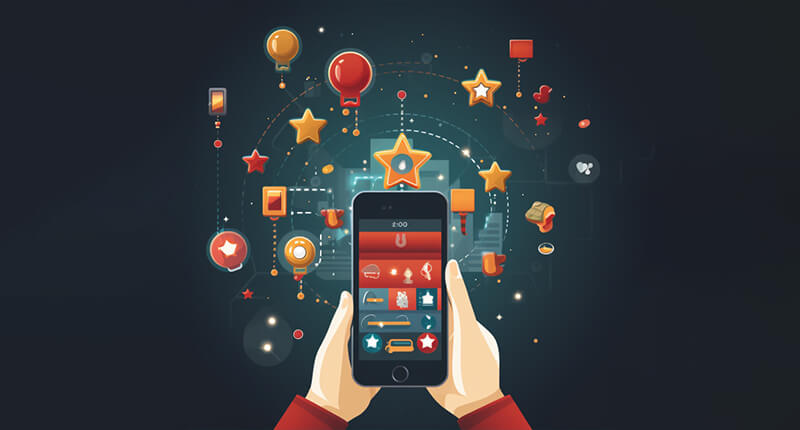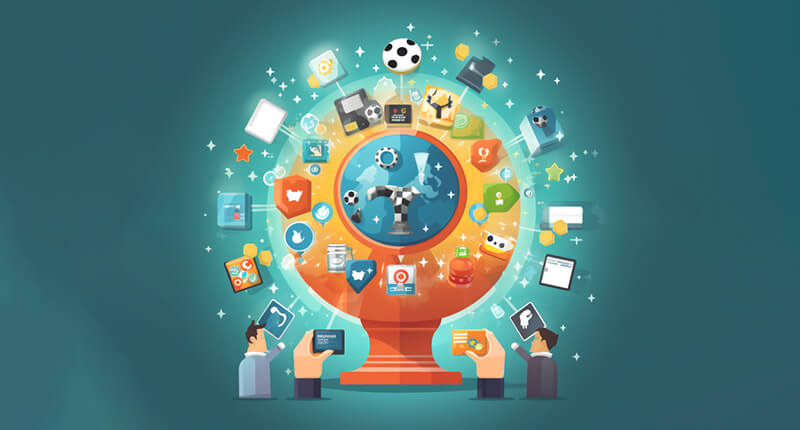In the digital age, where attention spans are short and competition for user engagement is fierce, businesses are continually seeking innovative ways to capture and retain the attention of their target audience. One effective strategy that has gained significant traction is gamification. By incorporating game elements into non-gaming contexts, businesses can enhance user engagement, motivate desired behaviors, and create memorable and interactive experiences. In this blog post, we will explore the power of gamification and how businesses can utilize it to enhance user engagement.
What is Gamification?
Gamification is the application of game design principles and mechanics in non-gaming contexts to engage and motivate users. It involves incorporating elements such as points, badges, leaderboards, challenges, levels, rewards, and storytelling to transform ordinary tasks or experiences into more enjoyable and interactive ones.
Increasing Motivation and Participation:
Gamification taps into intrinsic human motivators, such as competition, achievement, and recognition, to encourage user participation. By offering rewards, leveling up, and creating challenges, businesses can ignite users’ intrinsic motivation, making tasks more engaging and enjoyable. This increased motivation drives users to actively participate and invest their time and effort in achieving desired goals or outcomes.
Enhancing Learning and Skill Development:
Gamification can be a powerful tool for learning and skill development. By incorporating game elements such as quizzes, simulations, and progress tracking, businesses can make the learning process more interactive and engaging. Gamified learning experiences can improve information retention, increase user engagement, and provide immediate feedback, fostering a continuous learning journey.
Creating a Sense of Achievement and Progress:
One of the key elements of gamification is providing a sense of achievement and progress. Through the use of levels, badges, and progress bars, businesses can visually represent users’ progress and accomplishments. This sense of achievement motivates users to continue engaging with the experience, striving to reach the next level or earn additional rewards.
Fostering Competition and Social Interaction:
Gamification often incorporates elements of competition and social interaction, tapping into users’ desire to compare their performance with others and engage in friendly competition. Leaderboards, challenges, and multiplayer experiences create a sense of community, encourage users to push their limits, and foster healthy competition. This social aspect of gamification can enhance user engagement and create a sense of belonging and camaraderie among participants.
Encouraging Desired Behaviors:
Gamification can be used as a tool to encourage desired behaviors or actions. By rewarding users for completing specific tasks, taking desired actions, or achieving milestones, businesses can motivate users to engage in behaviors that align with their goals. This can range from encouraging customers to make purchases, engaging employees in training programs, or motivating users to adopt healthy habits.
Personalization and Customization:
Personalization is an essential aspect of effective gamification. Businesses should consider the individual preferences, skill levels, and goals of their target audience when designing gamified experiences. By allowing users to customize their avatars, select their preferred challenges, or tailor their learning paths, businesses can enhance user engagement and create a more personalized and immersive experience.
Feedback and Progress Tracking:
Gamification provides opportunities for real-time feedback and progress tracking. Businesses can provide immediate feedback on user actions, performance, and progress, allowing users to make adjustments and improve their outcomes. Progress tracking, such as progress bars or achievement badges, visually represents users’ progress and serves as a visual reinforcement, encouraging continued engagement.
Conclusion:
Gamification is a powerful strategy for enhancing user engagement across various contexts. By incorporating game elements, businesses can tap into intrinsic motivation, create interactive experiences, and drive desired behaviors. Whether it’s boosting customer engagement, fostering learning and skill development, or encouraging employee participation, gamification has the potential to transform ordinary experiences into captivating and rewarding ones. Embrace the power of gamification in your business strategy and explore how you can incorporate game elements to enhance user engagement, motivate desired behaviors, and create memorable and immersive experiences for your target audience. Remember to personalize the experience, provide feedback and progress tracking, foster competition and social interaction, and reward achievements to maximize the impact of gamification. With a well-designed gamified experience, you can captivate and retain the attention of your users, driving meaningful engagement and achieving your business objectives.



